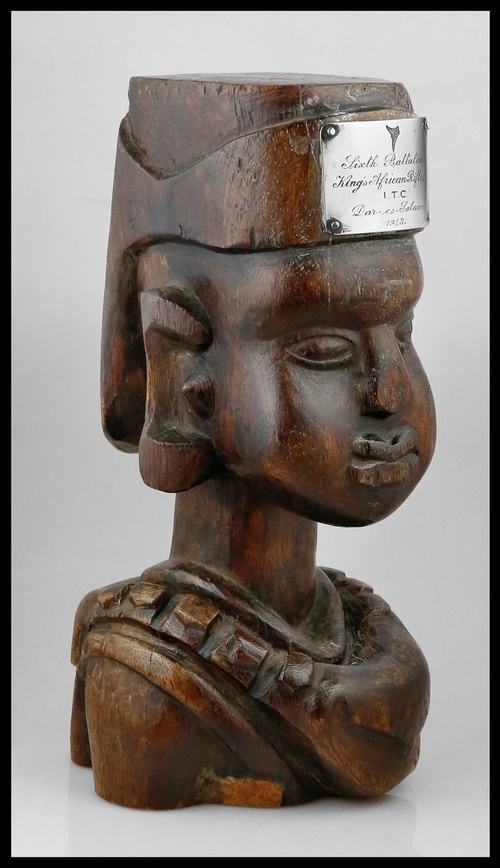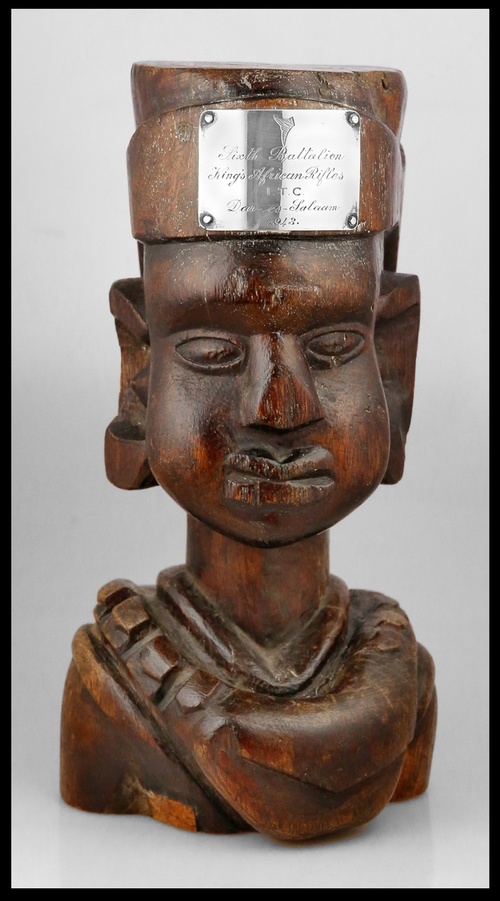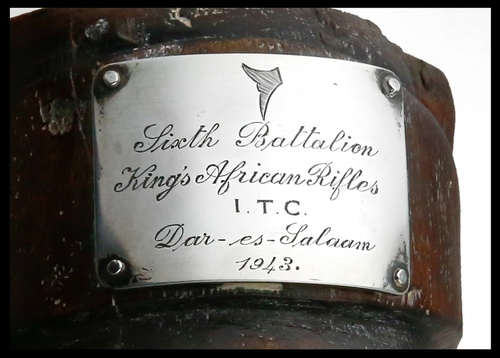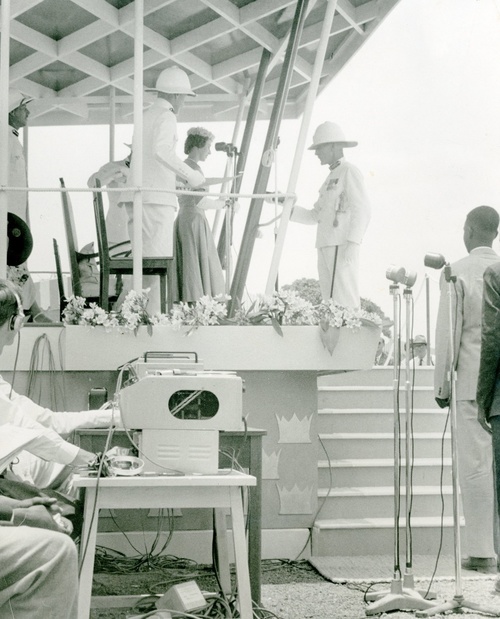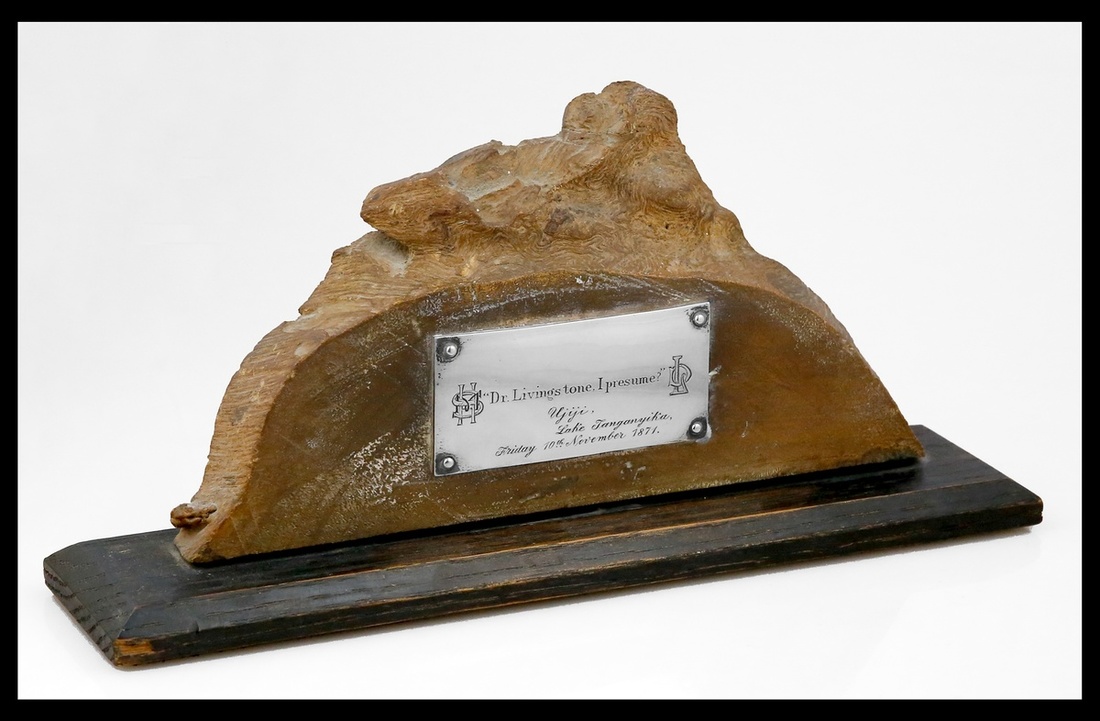Auction: 17003 - Orders, Decorations and Medals
Lot: 597
Sold by Order of the Recipient's Daughter
'I think that you will be interested to learn that you have been immortalised by the Belgian scientist, Dr. Max Poll, of the Belgian Congo Museum at Tervueren, who has named a new species of fish from Lake Tanganyika as Lamprologus savoryi …'
A letter from the Tanganyika Territory Department of Agriculture to Deputy Provincial Commissioner Bryan Savory, refers.
A fascinating and well-documented Second World War and Mau Mau campaign group of four awarded to Lieutenant B. W. Savory, late King's African Rifles, for many years a popular and talented Deputy Provincial Commissioner in Tanganyika
His early forays into East Africa commenced in the early 1930s, when he photographed dugongs on Mafia Island and began to foster a relationship with the Natural History Department of the British Museum
Otherwise a prolific author of short-stories, he also published the landmark guidebook, A Note for Visitors to the Livingstone-Stanley House at Kwihara, near Tabora
Africa Star; War Medal 1939-45; Africa General Service 1902-56, 1 clasp, Kenya (B. W. Savory); Coronation 1953, mounted as worn, good very fine (4)
Bryan Wyman Savory was born on 22 April 1904, the youngest of seven children of E. W. Savory, involved in the fine art industry in the West Country. He was educated at Clifton College and Trinity College, Oxford, and thereafter embarked on a career as a colonial administrator; he was posted to Kigoma District in Western Tanzania, on the eastern shores of Lake Tanganyika in 1933 and rose to become a highly effective - and popular - Deputy Provincial Commissioner. An accompanying letter states:
' 'Mr. Savory' and 'Kigoma' are most frequently used words whenever we talk of developments in this area, and during his term of office, this beautiful town of ours has no doubt modernised. We have now the bulk oil storage depots, the entertaining cinema, a modern petrol service station, an x-ray plants, and we shall soon have a regular air service linking us with the rest of the World.'
From the letters and accounts provided via colleagues and friends, it is apparent that Savory devoted 24 years of his working life to the people and infrastructure of this part of East Africa. He recognised early on the importance of promoting tourism and was instrumental in bringing people of all nationalities to see the famous Livingstone Memorial at Ufifi, via the provision of advertising and new roads and accommodation; he also wrote the first guidebook: A Note for Visitors to the Livingstone-Stanley House at Kwihara, near Tabora.
His earlier forays into East Africa commenced in the 1930s, when he photographed dugongs on Mafia Island and began to foster a relationship with the British Museum (Natural History Department).
The Museum wrote to him in December 1932, requesting films of leopards, civets, jackals, jumping shrews, flying squirrels and a host of other species. By 1935, Savory was procuring both skins and skulls, and wrote articles for The Times about hitherto little-known species such as the okapi; this interest in wildlife and the outdoors would explain his subsequent membership to the Bristol, Clifton and West of England Zoological Society in later years.
With the outbreak of the Second World War, Savory was commissioned in 1/6th King's African Rifles. He moved to Nairobi as part of the Army Postal Service, East Africa Force. His letters describe his 'reasonably happy force' and he makes clear the need to maintain military secrecy. However, far more threatening than enemy activity seems to have been the prevalence of malaria and other diseases.
The war over, Savory returned to his role in Tanganyika, with periods of leave back home in Burley, Hampshire. He became a prolific writer of short-stories, including Operation Clam Shell which was published in March 1958. Writing under the pseudonyms 'S. Pero' and 'Bwana Mzee,' he compiled a host of fictional - and possibly non-fictional - stories, nearly all relating to life in East Africa. The high esteem in which he was held might be summarised in the following testimonial:
'It is our sincere desire and we earnestly beg to request you, on behalf of the residents of Kigoma and Buha Districts, to either extend his tour of service or kindly request Mr. Savory to serve one more tour in Kigoma District … His presence in Kigoma and Buha Districts will be indispensable to complete the schemes launched during his term of office. He has left no stone unturned to see that these Districts play a very important part in the economic advancement of the Territory.'
Following his retirement in 1957 - and return to Burley - Savory continued to be a prolific writer and enjoyed stamp collecting. He also continued to work for the Commonwealth Institute until he was 70 years old, visiting schools and giving talks on East Africa; he died on 25 March 1980. He had two daugters, Frances, a Doctor who was tragically killed in a car accident in British Columbia and Fiona, an Investment Administrator who lives in London.
Sold with a highly impressive archive of original documentation, together with related artefacts, including:
(i)
A framed portrait photograph of the recipient as a young man, dated 1927; loose photographs of Savory in Africa, including presenting of the Colours to H.M. Queen Elizabeth II; extensive formal and informal wedding photographs including their wedding car and family portrait photographs.
(ii)
Buckingham Palace certificate for the recipient's Coronation Medal 1953, in the name of 'Bryan Wyman Savory'.
(iii)
A quantity of correspondence dating from the 1939-45 War, largely written by '2/Lt. B.W. Savory 1/6 Bn. King's African Rifles'.
(iv)
A large archive of paperwork relating to the administration of Tanganyika Territory; tax issues, the maintaining of law and order, and civil cases in the region.
(v)
Retirement letters from the Colonial Office (2), and the Secretariat, Dar-es-Salaam, dated 28 February 1957.
(vi)
Letters from the British Museum (Natural History Department) (8), relating to the acquisition of specimens such as Lion, Leopard, Cane Rat, Baboon and Lung Fish - 'As regards mammals from Mafia Island, almost everything you can get hold of is wanted'; a typed note on Mammal skins obtained by B. W. Savory; 'Thank you' cards from the British Museum (Natural History Department), dated 1932 (2), 1935 and 1938, relating to the acquisition of 'Two skulls and a lower jaw of the Dugong' and 'twenty five skulls of East African mammals'; further correspondence from the Zoological Society of London and the Royal College of Surgeons regarding deformed elephant tusks which would be used to 'shed considerable light on some of our problems in Dental Pathology'; and corresponding newspaper cuttings.
(vii)
A booklet written by 'B. W. Savory, Esq.', entitled A Note for Visitors to the Livingstone-Stanley House at Kwihara, near Tabora; together with a comprehensive archive of short stories by Savory, which focus heavily upon the individuals and wildlife of East Africa.
(viii)
An envelope of private correspondence with family and friends, dating from the early 1920s to the Second World War, including poetic verses and dinner menus; a copy of an article written by Savory, entitled 'Operation Clam Shell,' which describes his quest for nyera, the Giant Clam shells found along the East African coastline; a copy of the book 'Corona' which contains the story and those of his contemporaries, dated March 1958.
(ix)
A framed photograph of a snow-capped East African mountain, most likely Mount Kilimanjaro.
(x)
A wooden desk piece with silver plaque inscribed, "Dr. Livingstone, I presume?" Ujiji, Lake Tanganyika, Friday 10th November 1871'; together with related photographs of Savory being presented with this piece by H.R.H. Princess Margaret, and additional photographs of him visiting the home of Livingstone and giving a speech; also considerable quantity of related postcards and newspaper articles.
(xi)
'Tanganyika Territory' cap badges (4), in brass and white metal; King's African Rifles cap badges (2), and shoulder titles (4), various pips and buttons.
(xii)
Ornate hardwood African bust of a soldier of the K.A.R., with silver plaque engraved, 'Sixth Battalion, King's African Rifles, I.T.C., Dar-es-Salaam, 1943', approximately 25 cm. high.
(xiii)
White metal Cicada brooch with pin, together with a gilt panel to N. H. Desai, Indian Public School, Kigoma, 1-3-1947, hand inscribed to reverse 'Opened by B.W. Savory, D.C.
Kigoma.'
(xiv)
Ornate Indian silver scroll case, with African scenes, engraved 'Presented by The Hindu Mandal Kigoma to B. W. Savory, Esqr., Deputy Provincial Commissioner'; together with the handwritten words read aloud at his retirement function by the President and Secretary of the Handu Mandal, on 16 March 1957.
(xv)
Tanzanian dress sword, G.VI.R., brass-gilt with leather hilt.
Please see Lot 598 for his wife's award and Lot 644 for his miniature dress awards.
Subject to 20% VAT on Buyer’s Premium. For more information please view Terms and Conditions for Buyers.
Sold for
£850


